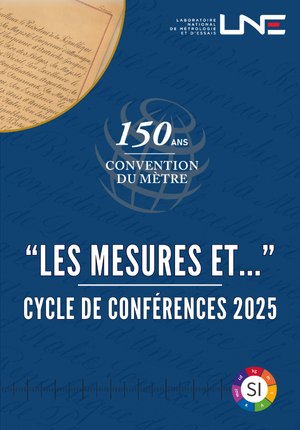Analysis of Lined Rock Caverns behaviour under cyclic loads and natural hazards: Application to risk control for Gaseous Hydrogen Storage
| ABG-132730 | Thesis topic | |
| 2025-07-01 | Public funding alone (i.e. government, region, European, international organization research grant) |
- Ecology, environment
Topic description
The increasing demand for large-scale hydrogen storage to support the energy transition requires innovative underground storage solutions. Lined rock caverns (LRC) represent a promising option for gaseous hydrogen storage. However, ensuring the safety and integrity of these storage facilities requires a thorough understanding of the geomechanical behaviour of the surrounding rock under cyclic pressure and temperature conditions, as well as natural hazards like earthquakes and others major industrial risk scenarios.
This PhD research aims to investigate the geomechanical behaviour of the surrounding rock in LRCs, model stress distributions within the steel liner and surrounding rock and assess associated risks to improve the safety and efficiency of hydrogen storage.
The research work consists of a theoretical and numerical modeling of the processes. After the inventory of the different Thermo-Hydro-Mechanical phenomena that may occur around the LRC and in its lining components (concrete and steel layers), bibliographic studies will be conducted to determine the constitutive laws of these phenomena and their coupling models. Preliminary analyses should make it possible to determine the dominant phenomena that have a determining effect on the cracking, damage, and fatigue of the different components and, more generally, on the integrity of the storage.
The numerical modeling will take into account these dominant phenomena in the characterization of the rock surrounding the cavern and of the lining components. The numerical modeling can be carried out by the Disroc software which is a FEM calculation code for coupled THM processes occurring in materials and structures and which can integrate the presence of discontinuities such as cracks, fractures and interfaces in the processes. Numerical analysis must determine the risks incurred by the LRC and its short- and long-term integrity for different THM solicitations LRC undergoes during hydrogen storage operations as well as dynamic solicitations dues to earthquakes.
The research work will involve in particular:
- Characterizing the rock mass response to cyclic loading and thermal fluctuations.
- Investigating the impact of water pressure presence in the rock mass.
- Considering different geometries, lithologies, and loading scenarios using the FEM software Disroc to model stresses in the steel liner.
- Simulating crack propagation in the steel liner under cyclic pressure and temperature loads, accounting for varying levels of hydrogen embrittlement (based on external expertise).
- Modeling fatigue and crack propagation in the concrete liner and adjacent rock formation.
- Assessing risks posed by earthquakes, particularly on connecting lines and wellbores.
- Proposing design improvements and operational guidelines to minimize risk
EXPECTED CONTRIBUTION
- Enhanced understanding of rock mass behaviour under cyclic hydrogen storage conditions.
- Quantification of risks associated with hydrogen embrittlement, crack propagation, and seismic events.
- Recommendations for safer and more efficient MLRC designs for hydrogen storage.
|
|
Figure 2. Schematics of possible cracks propagation on LRC (Masoudi et al., 2024)
Funding category
Funding further details
Presentation of host institution and host laboratory
The French National Institute for Industrial Environment and Risks (Ineris) is an industrial and commercial public establishment under the aegis of the Ministry of the Environment. The Institute’s mission is to contribute to the prevention of risks caused by economic activities to health, environment, and the safety of people and goods.
Candidate's profile
- The candidate should have a strong background in geomechanics, rock mechanics, or a related field.
- Proficiency in numerical modelling and simulation tools, particularly for thermo-hydro-mechanical (THM) analyses, is essential.
- Familiarity with hydrogen storage concepts and fracture mechanics will be advantageous.
Vous avez déjà un compte ?
Nouvel utilisateur ?
Get ABG’s monthly newsletters including news, job offers, grants & fellowships and a selection of relevant events…
Discover our members
 ASNR - Autorité de sûreté nucléaire et de radioprotection - Siège
ASNR - Autorité de sûreté nucléaire et de radioprotection - Siège 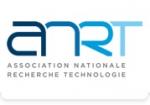 ANRT
ANRT  ONERA - The French Aerospace Lab
ONERA - The French Aerospace Lab  MabDesign
MabDesign  Ifremer
Ifremer  Laboratoire National de Métrologie et d'Essais - LNE
Laboratoire National de Métrologie et d'Essais - LNE  Généthon
Généthon 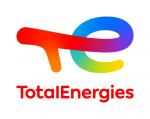 TotalEnergies
TotalEnergies  MabDesign
MabDesign  Aérocentre, Pôle d'excellence régional
Aérocentre, Pôle d'excellence régional  CASDEN
CASDEN  CESI
CESI 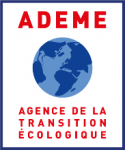 ADEME
ADEME  Tecknowmetrix
Tecknowmetrix 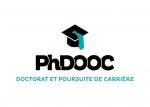 PhDOOC
PhDOOC  Institut Sup'biotech de Paris
Institut Sup'biotech de Paris  SUEZ
SUEZ  Nokia Bell Labs France
Nokia Bell Labs France  Groupe AFNOR - Association française de normalisation
Groupe AFNOR - Association française de normalisation



